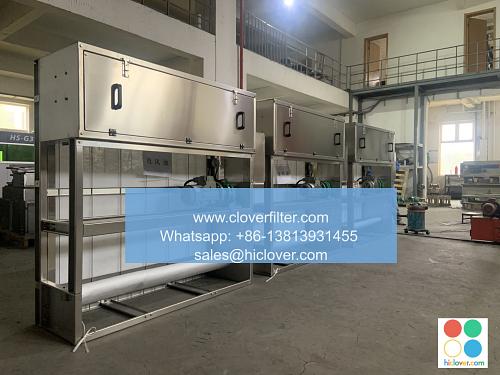How to Measure Air Filter Pressure Drop Using a Pressure Gauge

Air filters play a vital role in maintaining indoor air quality and ensuring the efficient operation of Heating, Ventilation, and Air Conditioning (HVAC) systems. One key parameter to consider when evaluating the performance of air filters is the pressure drop, which refers to the difference in air pressure between the upstream and downstream sides of the filter. In this article, we will discuss how to measure air filter pressure drop using a pressure gauge, and highlight the importance of this measurement in various application areas, including industrial air filtration, commercial HVAC systems, and residential air quality control.
Understanding Pressure Drop and Its Significance
Pressure drop is a critical factor in air filter performance, as it affects the overall energy efficiency and longevity of the filter. A higher pressure drop indicates increased resistance to airflow, which can lead to reduced filter life, increased energy consumption, and decreased system performance. By measuring pressure drop, facilities can optimize their air filtration systems to achieve a balance between filtration efficiency and energy efficiency.
Materials Needed to Measure Pressure Drop
To measure air filter pressure drop, you will need the following materials:
* A pressure gauge (digital or analog)
* A calibration certificate for the pressure gauge
* A tube or hose to connect the pressure gauge to the air filter
* A data logger or recorder (optional)
Step-by-Step Procedure for Measuring Pressure Drop
Here is a step-by-step guide to measuring air filter pressure drop using a pressure gauge:
1. Calibrate the pressure gauge: Ensure that the pressure gauge is calibrated according to the manufacturer’s instructions and that the calibration certificate is up to date.
2. Connect the pressure gauge: Connect the pressure gauge to the air filter using a tube or hose. Make sure that the connection is secure and free from leaks.
3. Take readings: Take pressure readings at the upstream and downstream sides of the air filter. Record the readings in inches of water gauge (in.wg) or pascals (Pa).
4. Calculate pressure drop: Calculate the pressure drop by subtracting the downstream pressure reading from the upstream pressure reading.
5. Record and analyze data: Record the pressure drop readings and analyze the data to determine the performance of the air filter.
Application Areas and Industries That Benefit from Pressure Drop Measurement
Measuring air filter pressure drop is essential in various industries and application areas, including:
* Industrial air filtration: Pressure drop measurement helps optimize air filtration systems in industrial settings, such as manufacturing facilities, power plants, and chemical processing plants.
* Commercial HVAC systems: Measuring pressure drop is crucial in commercial HVAC systems, as it helps maintain indoor air quality, reduce energy consumption, and prolong the life of air filters.
* Residential air quality control: Homeowners can benefit from measuring pressure drop to ensure that their air filters are operating efficiently and effectively, improving indoor air quality and reducing energy bills.
* Pharmaceutical and healthcare: In pharmaceutical and healthcare facilities, measuring pressure drop is critical to maintain cleanroom environments and prevent contamination.
* Aerospace and automotive: Pressure drop measurement is also important in the aerospace and automotive industries, where air filtration systems play a critical role in maintaining system performance and safety.
Best Practices and Recommendations
To ensure accurate and reliable pressure drop measurements, follow these best practices and recommendations:
* Use a high-quality pressure gauge: Choose a pressure gauge that is calibrated and certified to ensure accurate readings.
* Follow manufacturer instructions: Follow the manufacturer’s instructions for calibration, connection, and operation of the pressure gauge.
* Take multiple readings: Take multiple readings at different points to ensure accurate and representative results.
* Analyze data regularly: Regularly analyze pressure drop data to identify trends, optimize air filter performance, and schedule maintenance.
By following these guidelines and best practices, facilities can effectively measure air filter pressure drop and optimize their air filtration systems to achieve better indoor air quality, reduced energy consumption, and improved system performance. Whether you are in the industrial air filtration, commercial HVAC, or residential air quality control sector, measuring pressure drop is a crucial aspect of maintaining efficient and effective air filtration systems. It looks like you didn’t include a prompt. Please go ahead and provide one, and I’ll be happy to help!

